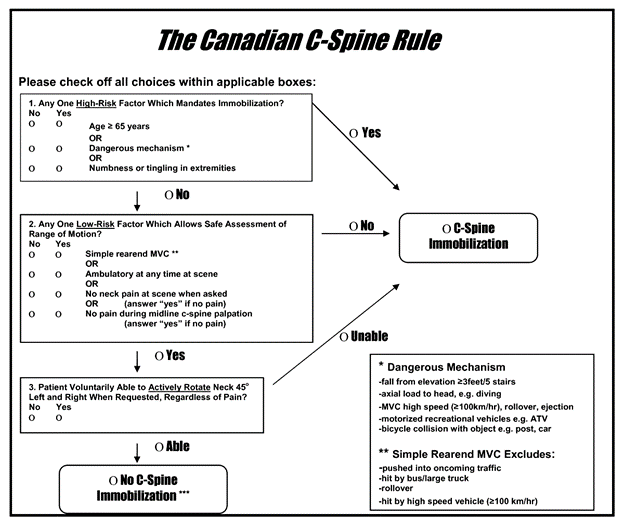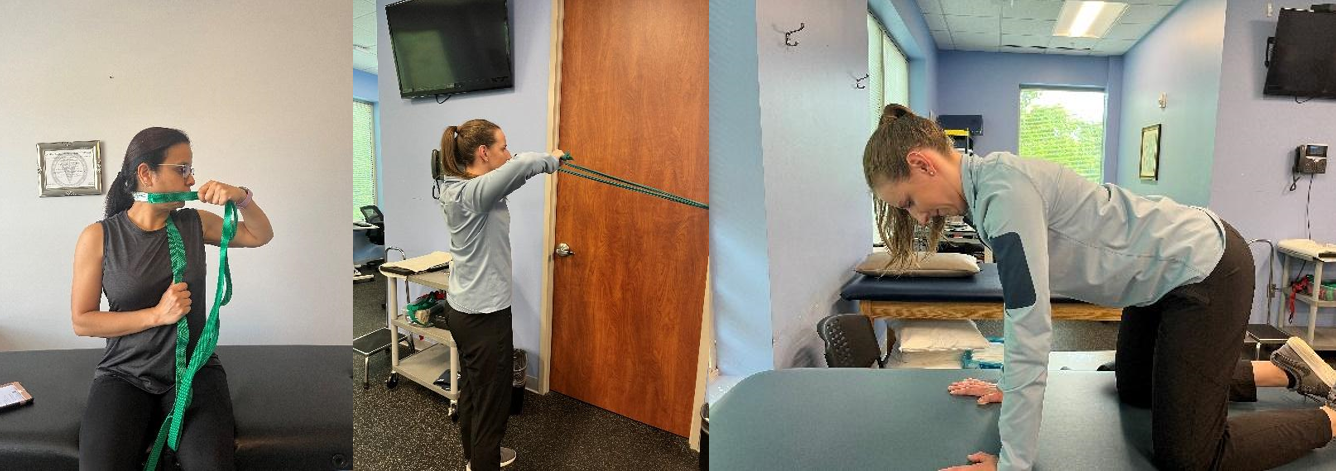Written By: Anju Dheer, PT, DPT, OCS, MTC
Neck pain, although a very common condition seen in the physical therapy clinic, can be an unnerving body part to treat. With red flag conditions ranging from ligamentous instability and vascular pathologies to cervical myelopathy, it can be intimidating to approach this area.
With a thorough history taking and a stepwise approach to evaluation, one can feel confident in managing neck pain.
History taking, in addition to usual questions of mechanism of injury and symptom behaviors should include specific questions about risk factors including the following:
- Hypertension
- High Cholesterol
- Migraine headaches
- 5 Ds and 3 Ns (dizziness, diplopia, dysarthria, dysphagia, drop attacks, ataxia, nausea, nystagmus and facial numbness)
Exam will be dictated by the answers to the above questions. With a low-risk profile, it is safe to perform a musculoskeletal exam. However, if a patient has high-risk factors and a vasculogenic hypothesis can account for their symptoms, then further neurological screening is warranted.
Neurological screening should include cranial nerve screening and peripheral screening.
If a patient has a history of trauma and PT is the first point of contact, then following the Canadian C-spine rules can guide the need to refer for imaging or not.
Image source: https://commons.wikimedia.org/wiki/File:The_Canadian_C-spine_rule_for_those_with_a_normal_Glasgow_coma_scale_and_who_are_otherwise_stable.png
In a patient with systemic conditions like RA or connective tissue disorders, (Marfan’s syndrome, Down’s syndrome or Ehlers Danlos syndrome etc) even trivial injury can compromise upper cervical stability. Knowledge of the role of different ligaments and of tests to assess instability is necessary to decide the course of treatment.
Once the patient is deemed safe to be treated by a Physical Therapist, they should be placed in one of the neck pain categories for the most effective and efficient treatment. APTA’s Clinical practice guidelines on neck pain provide a roadmap to do the same. Neck pain patients can be classified as:
- Neck pain with mobility deficits
- Neck pain with movement coordination impairments/ WAD
- Neck pain with radiating pain
- Neck pain with associated headaches
Based on the classification, targeted interventions can be performed for best outcomes. Some examples would include the following:
- Neck pain with mobility deficits will respond most favorably to cervical and thoracic mobilization and manipulation techniques, stretches and ROM exercises.
- Neck pain with movement coordination deficits will present with positive cranial cervical flexion test and deficits in neck flexor endurance. Interventions should target endurance and motor control training.
- Neck pain with radiating pain will often respond to stabilizing and mobilizing exercises along with traction.
- C1-2 self-SNAG has evidence to support usage for neck pain with headaches.
Register for my upcoming Live Webinar, Managing Neck Pain, taking place on July 22, 2023, to learn more! This course aims at simplifying the approach to this complex body part by building on a solid foundation of assessment strategies that introduce you to simple yet effective techniques and exercises for the best outcomes.
Visit summit-education.com for more information.
References:
Blanpied PR, Gross AR, Elliott JM, Devaney LL, Clewley D, Walton DM, Sparks C, Robertson EK. Neck Pain: Revision 2017. J Orthop Sports Phys Ther. 2017 Jul;47(7):A1-A83. doi: 10.2519/jospt.2017.0302. PMID: 28666405.
Bandiera G, Stiell IG, Wells GA, Clement C, De Maio V, Vandemheen KL, Greenberg GH, Lesiuk H, Brison R, Cass D, Dreyer J, Eisenhauer MA, Macphail I, McKnight RD, Morrison L, Reardon M, Schull M, Worthington J; Canadian C-Spine and CT Head Study Group. The Canadian C-spine rule performs better than unstructured physician judgment. Ann Emerg Med. 2003 Sep;42(3):395-402. doi: 10.1016/s0196-0644(03)00422-0. PMID: 12944893.
Rushton A, Carlesso LC, Flynn T, Hing WA, Rubinstein SM, Vogel S, Kerry R. International Framework for Examination of the Cervical Region for Potential of Vascular Pathologies of the Neck Prior to Musculoskeletal Intervention: International IFOMPT Cervical Framework. J Orthop Sports Phys Ther. 2023 Jan;53(1):7-22. doi: 10.2519/jospt.2022.11147. Epub 2022 Sep 13. Erratum in: J Orthop Sports Phys Ther. 2023 Jun;53(6):372-374. PMID: 36099171.


